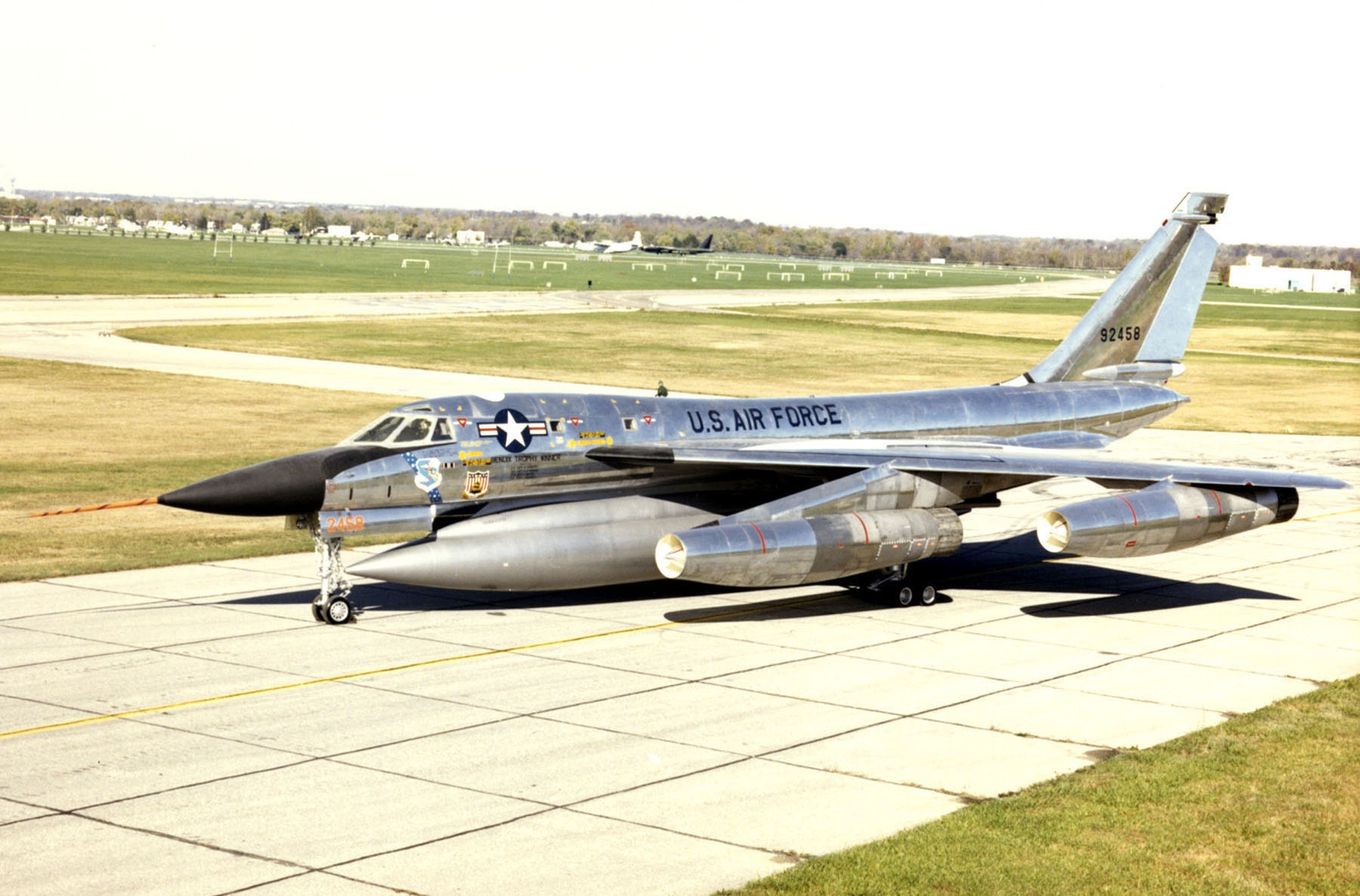What is the first image that comes to mind when you hear the words Cold War? A B-58 Hustler? The mushroom cloud of a nuclear explosion? A Saturn V rocket? An F-86 Sabre or a MiG-19? A Vought F-8 Crusader? The list seems endless. Many of the era’s iconic war machines have been etched into our minds since childhood. But visually, what records remain from this thrilling, mysterious, technologically groundbreaking, and perilous era?
The images available to us were limited to the ones we found in the massive volumes of encyclopedias or the pages of newspapers and magazines—images that excited us instantly. We would keep these photos, revisit them constantly, and examine them over and over again.
With the advent of the internet era, this scarcity gradually came to an end. At first, fact sheets and scattered photo galleries on the websites of air forces around the world brightened up our 14-inch CRT monitors.
Bu metinde soğuk savaş döneminden kalma bir kaç görseli ve bu görsellerin sahibi firmaları inceleyeceğiz.

Born from the fires of World War II, Convair—once Consolidated Vultee—was more than just an aircraft manufacturer; it was a force that shaped the future of aviation and space exploration. Forged in 1943 through the merger of Consolidated Aircraft and Vultee Aircraft, the company quickly became a titan of the skies. In 1953, it was absorbed by General Dynamics, continuing its legacy under the banner of the Convair Division.
Convair’s name became synonymous with power and innovation. It built the colossal B-36 Peacemaker, the strategic bomber that loomed over Cold War tensions, and the sleek, supersonic B-58 Hustler, a marvel of speed and precision. The skies saw the rise of its F-102 Delta Dagger and F-106 Delta Dart, interceptor jets designed to stand as guardians against any threat.
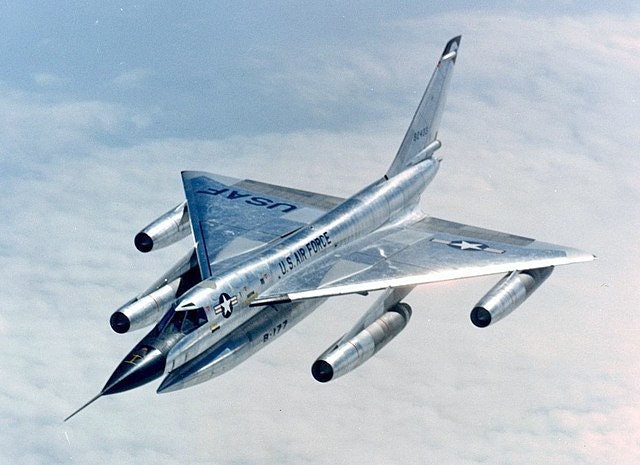
Convair B-58 Hustler
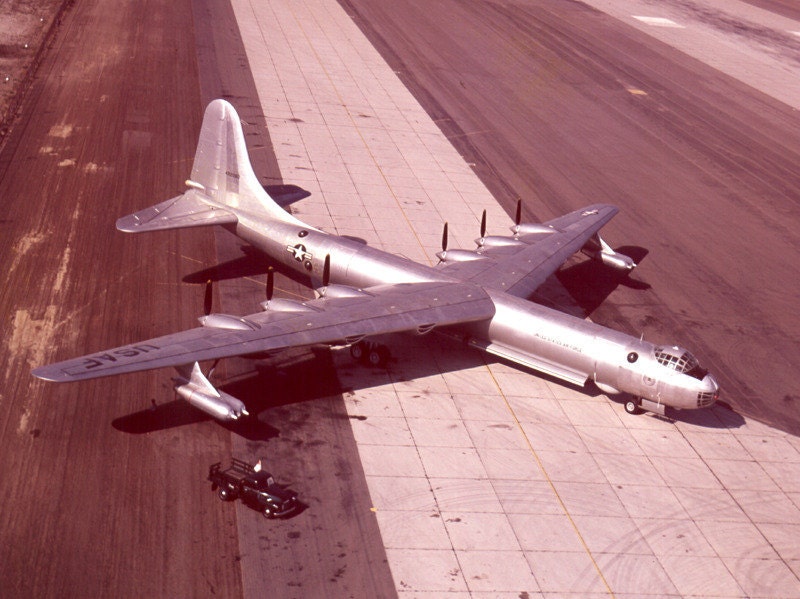
B-36 Peacemaker
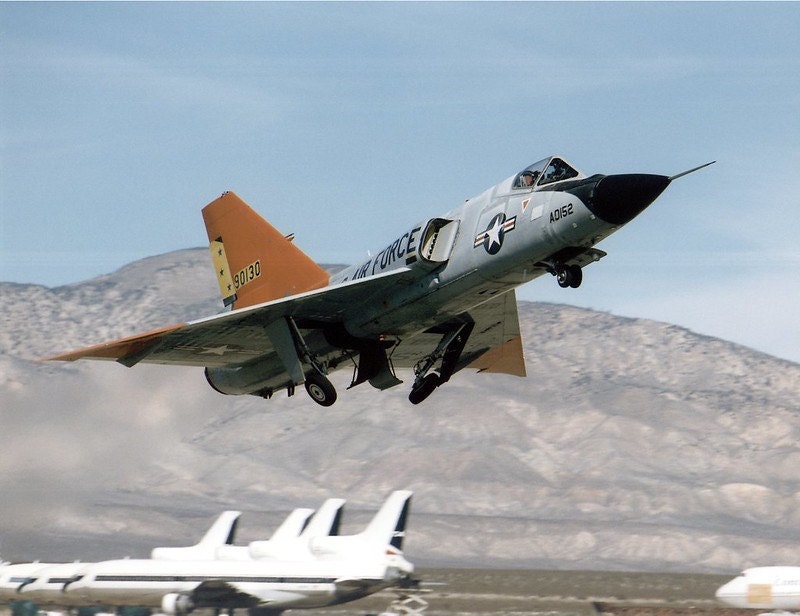
F-106 Delta Dart
But Convair's ambitions did not end at the edge of the atmosphere. It reached for the stars, engineering the mighty Atlas rockets—the very vehicles that carried America’s first astronauts into orbit as part of Project Mercury. This legacy only grew with the Atlas-Centaur, a revolutionary design that paved the way for countless missions beyond Earth. Even in 2025, the echoes of Convair’s ingenuity live on, its rocket designs still propelling humanity toward the unknown.
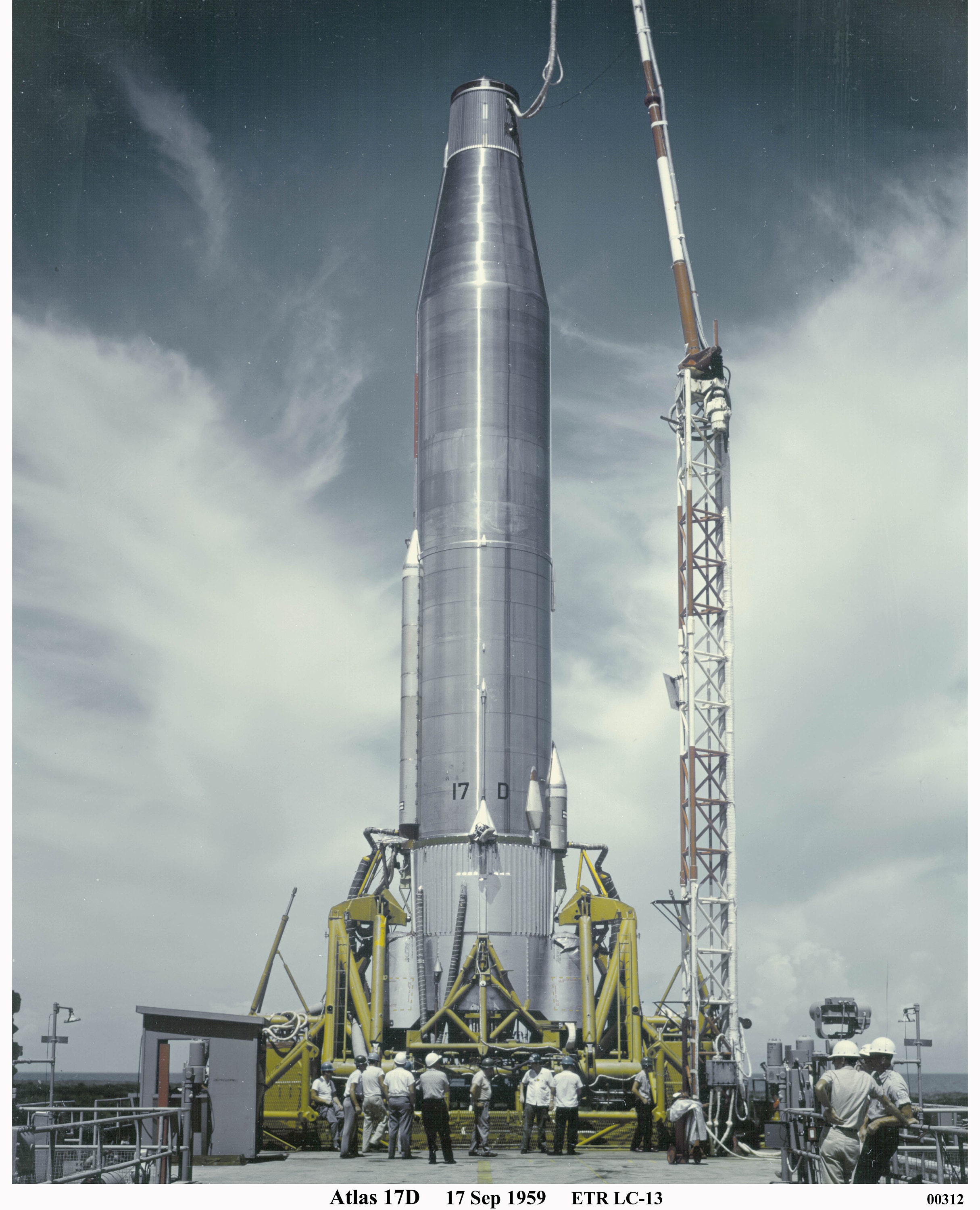
Yet, even giants fall. By the mid-1990s, Convair’s reign neared its end. In 1994, General Dynamics dismantled what remained of the legendary manufacturer, selling most of its divisions to aerospace powerhouses McDonnell Douglas and Lockheed. What was left of Convair lingered only briefly before being deactivated in 1996.
Though its name faded, Convair’s legacy endured—in the bombers that once patrolled the skies, in the interceptors that stood as sentinels of the Cold War, and in the rockets that carried humanity beyond Earth’s grasp. It was more than a company; it was a pioneer, an innovator, and a symbol of an era when the sky was not the limit—but only the beginning.
İşte bir kaç Convair görseli:
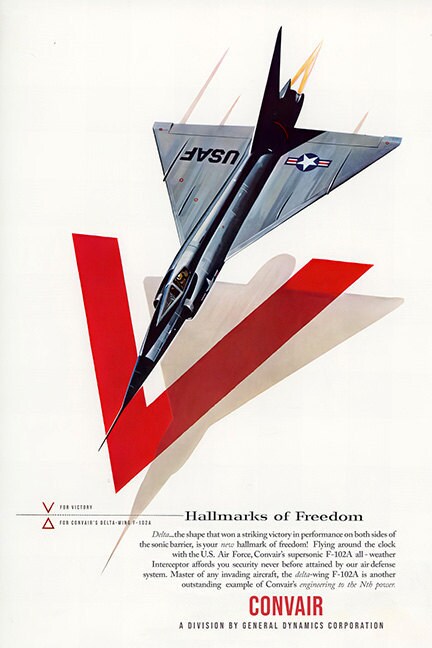
This vintage poster perfectly captures the sleek and futuristic look of the Convair F-102A Delta Dagger, one of the most important interceptors of the Cold War. Designed to stop Soviet bombers in their tracks, the F-102A was a cutting-edge machine for its time, with a supersonic speed and a distinctive delta-wing design that made it stand out. The bold artwork gives off a real sense of speed and power, showing the jet slicing through the sky with confidence. Back in the 1950s, this aircraft was a big deal—it was one of the first to feature automated flight control systems, making it a high-tech guardian of American airspace. More than just an advertisement, this poster is a piece of aviation history, showcasing the excitement and innovation of an era when the race for air superiority was at full throttle. A must-see for fans of classic military aviation!
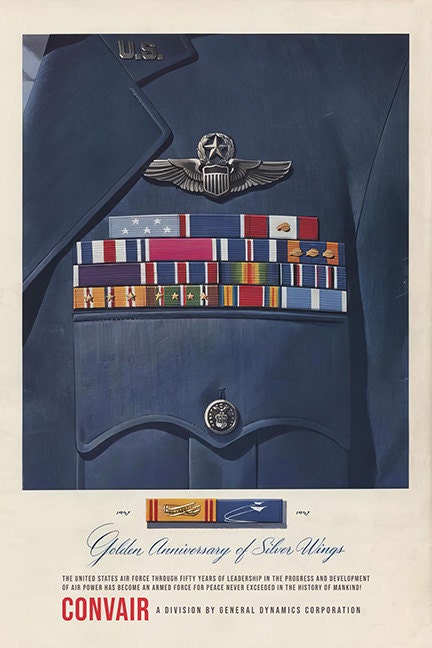
This poster is all about honoring the legacy of the U.S. Air Force, celebrating 50 years of leadership in the skies. Instead of featuring a jet, it puts the spotlight on the people behind the power—the pilots who’ve dedicated their lives to aviation and defense. The stacked ribbons and the Command Pilot badge tell a story of experience, dedication, and service. The deep blue uniform, crisp details, and bold lettering give off a strong sense of pride and professionalism. Created by Convair, a company that played a big role in shaping the Air Force’s fleet, this piece isn’t just an ad—it’s a tribute to the men and women who’ve helped push the boundaries of air power. A must-have for fans of military aviation and Cold War-era history!
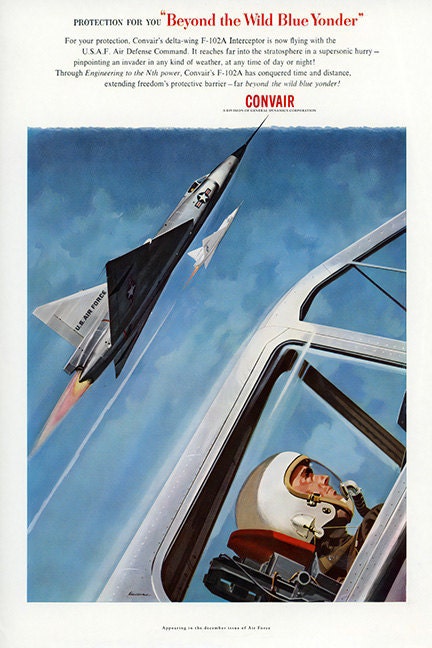
This Convair F-102A ad captures the speed, power, and Cold War urgency of early supersonic interceptors. With afterburners blazing, the delta-wing F-102A rockets into the sky, ready to defend U.S. airspace at a moment’s notice. The tagline "Beyond the Wild Blue Yonder" perfectly fits this aircraft's high-altitude mission—intercepting threats before they even reach their targets. The perspective here is great too—showing the pilot of another aircraft looking up as the F-102A streaks past, emphasizing just how fast and high this thing could fly. Designed as part of the Air Force's Air Defense Command, the F-102 was the first operational supersonic interceptor, built to counter Soviet bombers during the Cold War. It’s a classic piece of aviation history—both in terms of aircraft design and mid-century aerospace advertising. If you're into Cold War jets, vintage military ads, or just love the sleek lines of delta-wing fighters, this one’s a gem!
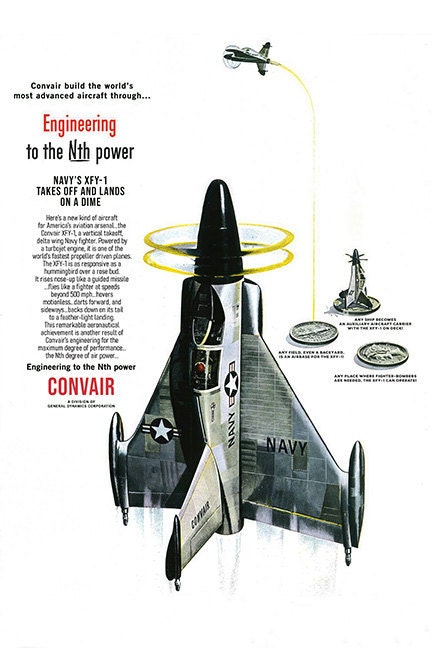
This poster is a blast from the past, straight out of the Cold War era, showcasing one of the most ambitious aviation experiments: the Convair XFY-1 Pogo. Imagine a fighter jet that takes off and lands vertically—no runway needed. Just plop it down on a ship, or heck, your backyard, and you're good to go.
For aviation geeks: The Pogo was built with a turboprop engine powerful enough to push this thing past 500 mph, making it one of the fastest prop-driven planes ever. It could hover like a helicopter, then rocket upward like a missile. Sounds futuristic, right? Well, back in the ‘50s, engineers were really thinking outside the box.
For defense buffs: The idea was to make ships self-sufficient air bases—deploying fighters without needing a full-sized aircraft carrier. At the time, vertical takeoff was seen as a game-changer, and this poster is all about selling that vision. The message? Every little patch of land or deck could be a launch point for America’s next big air power move.The Pogo never made it past the prototype stage, but it still stands as a wild example of Cold War innovation and boundary-pushing design. This poster is more than just an ad—it’s a glimpse into an era when engineers were willing to take risks to redefine air combat. 🚀✈️
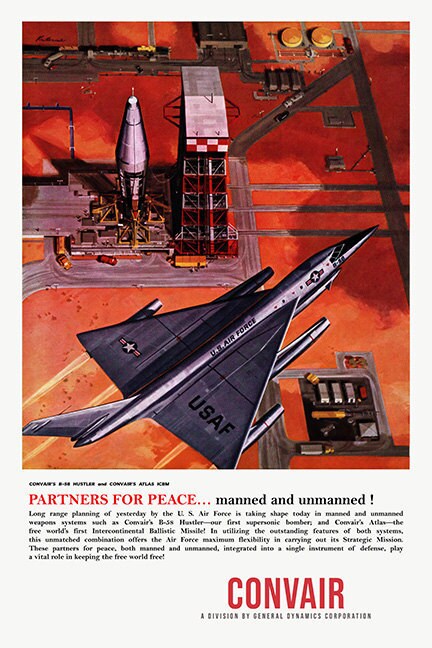
This vintage Convair ad screams 1950s aerospace ambition! Front and center, you’ve got the B-58 Hustler, America’s first supersonic bomber, slicing through the skies with its sleek delta-wing design. Below, the Atlas ICBM stands tall—one of the earliest intercontinental ballistic missiles, designed to deliver nuclear deterrence across continents.
For aviation buffs: The B-58 was built for speed, cruising at Mach 2, and packed with cutting-edge tech for its time. A long-range bomber with a crew of three, it was meant to outpace threats and keep the U.S. ahead in the strategic air race.
For defense enthusiasts: The message here is clear: “manned and unmanned partners for peace.” The B-58 and Atlas missile were part of a broader Cold War strategy—combining human-piloted bombers with automated missile systems to keep adversaries in check. The ad positions them as complementary tools in America’s defense arsenal.This poster is more than just an ad—it captures the era's obsession with speed, deterrence, and technological supremacy. A bold statement from Convair, reminding the world that the U.S. Air Force was pushing the limits of aerospace innovation. 🚀✈️
